
Samba is a name or prefix used for several rhythmic variants, such as samba urbano carioca, samba de roda, recognized as part of the Intangible Cultural Heritage of Humanity by UNESCO, amongst many other forms of samba, mostly originated in the Rio de Janeiro and Bahia States.
Disney comics are comic books and comic strips featuring characters created by the Walt Disney Company, including Mickey Mouse, Donald Duck and Uncle Scrooge.
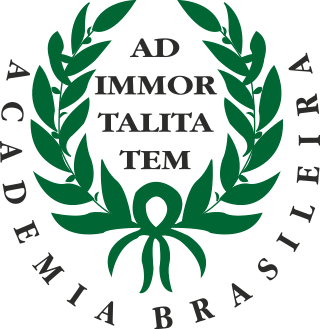
The Academia Brasileira de Letras (ABL) is a Brazilian literary non-profit society established at the end of the 19th century. The first president, Machado de Assis, declared its foundation on Tuesday, 15 December 1896, with the by-laws being passed on Thursday, 28 January 1897. On Tuesday, 20 July of the same year, the academy started its operation.

The Brazilian Academy of Sciences is the national academy of Brazil. It is headquartered in the city of Rio de Janeiro and was founded on May 3, 1916.

Grande Otelo was the stage name of Brazilian actor, comedian, singer, and composer Sebastião Bernardes de Souza Prata. Otelo was born in Uberlândia, and was orphaned as a child. He kept running away from the families that adopted him; only when he took up art did his life become settled.
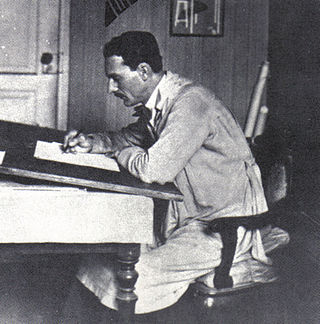
José Carlos de Brito e Cunha, known as J. Carlos, was a Brazilian cartoonist, illustrator and graphic designer. J. Carlos also did sculpture, wrote vaudeville plays, wrote lyrics for samba and was a major talent in Brazilian Art Deco graphic design.
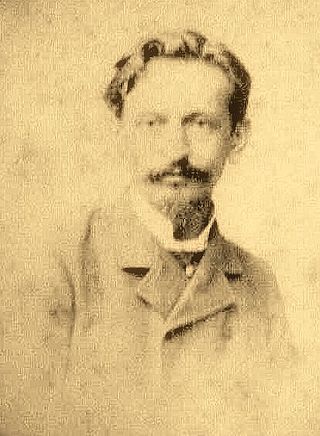
Angelo Agostini was an Italian-born Brazilian illustrator, journalist and founder of several publications, and although born in Italy, is considered the first Brazilian cartoonist.

Brazilian comics started in the 19th century, adopting a satirical style known as cartoon, charges or caricature that would later be cemented in the popular comic strips. The publication of magazines dedicated exclusively to comics, in Brazil, started at the beginning of the 20th century. Brazilian artists have worked with both styles. In the case of American comics some have achieved international fame, like Roger Cruz with X-Men and Mike Deodato with Thor, Wonder Woman and others.

Events in the year 1952 in Brazil.
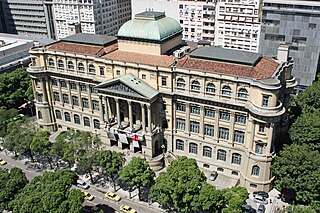
The history of the book in Brazil focuses on the development of the access to publishing resources and acquisition of the book in the country, covering a period extending from the beginning of the editorial activity during colonization to today's publishing market, including the history of publishing and bookstores that allowed the modern accessibility to the book.
Sudoeste: cadernos de Almada Negreiros was a Portuguese review published in Lisbon in 1935. The magazine was an attempt to continue the Orpheu movement. It was headed by Almada Negreiros, in collaboration with Dário Martins, which put their knowledge in different forms of direct interventionism, contacts and its influences to the publication of the periodical.
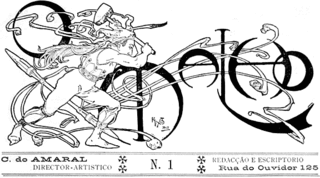
O Malho was a Brazilian weekly satirical magazine published from 1902 to 1954. It was based in Rio de Janeiro, Brazil. It was the first commercially successful Brazilian satirical magazine during the Republican regime.
Azulejos : Semanário Ilustrado de Ciências, Letras e Artes was a review published in Lisbon, Portugal from September 1907 to February 1909. Five series of fifteen issues were published.

The Sociedade Propagadora dos Conhecimentos Úteis of Lisbon, Portugal, formed in 1837. The group produced a weekly illustrated magazine, O Panorama, intended for the general interest reader and priced relatively affordably. According to the society, some copies were also distributed free of charge to charities such as Casa Pia orphanage and Casa de Expostos. Editors included Alexandre Herculano, António Feliciano de Castilho, and António de Oliveira Marreca. Other contributors included Rodrigo Jose de Lima Felner.
Adolfo Aizen was a Russian Empire-born Brazilian journalist and editor. He grew up in Salvador, moving to Rio de Janeiro at the age of 15. In Rio, he worked at the publisher O Malho, responsible for the magazine O Tico-Tico, the first magazine to publish comics in Brazil. In 1945, Aizen founded Editora Brasil-América Limitada (EBAL), which would become the most important Brazilian comic book publishing house until the 1980s, being responsible for publishing comics like Superman, Batman and Prince Valiant, among others. In 2000, Aiezen was awarded posthumously with the title of "Master of the National Comics" by Prêmio Angelo Agostini.
Luiz Sá was a Brazilian comic book artist, caricaturist, illustrator, painter, scenographer and publicist. Born in the state of Ceará, he moved to Rio de Janeiro around 1929, where he began working for O Tico-Tico, the first comics magazine in Brazil. In O Tico-Tico, Sá created his most famous characters: the trio Reco-Reco, Bolão and Azeitona, considered the first legitimately Brazilian comic book characters and also the most popular of the magazine until its ending, in the 1960s. Sá was also one of the pioneers in Brazilian animation. In 1974, he contracted tuberculosis and, in 1979, he died of complications from the disease. In 1988, he was awarded posthumously with the Prêmio Angelo Agostini for Master of National Comics, an award that aims to honor artists who have dedicated themselves to Brazilian comics for at least 25 years.
Carlos Arthur Thiré was a Brazilian set designer, filmmaker, costume designer, painter and comics artist. He was married to actress Tônia Carrero and father of actor Cecil Thiré. He began his career as an illustrator in the 1930s at the newspaper A Noite, having been nominated to this work by Júlio César de Mello e Souza, a family friend. Thiré created the comics strip Raffles, whose comic books were published by Adolfo Aizen at Grande Consórcio de Suplementos Nacionais publishing house. He also created comics for the magazine O Tico-Tico, but, around the 1940s, he left comics to focus on his work as an actor and, later, in 1949, as a set designer, screenwriter and director at Companhia Cinematográfica Vera Cruz. In 1998, he was posthumously awarded with the Prêmio Angelo Agostini for Master of National Comics, an award that aims to honor artists who have dedicated themselves to Brazilian comics for at least 25 years.

Santa Catarina Hospital is a private institution located on Paulista Avenue, in the city of São Paulo, Brazil. It was founded in 1906 and is maintained by the Santa Catarina Congregation Association, a philanthropic entity that also operates in the states of Rio de Janeiro, Espírito Santo, Mato Grosso, and Rio Grande do Sul.












